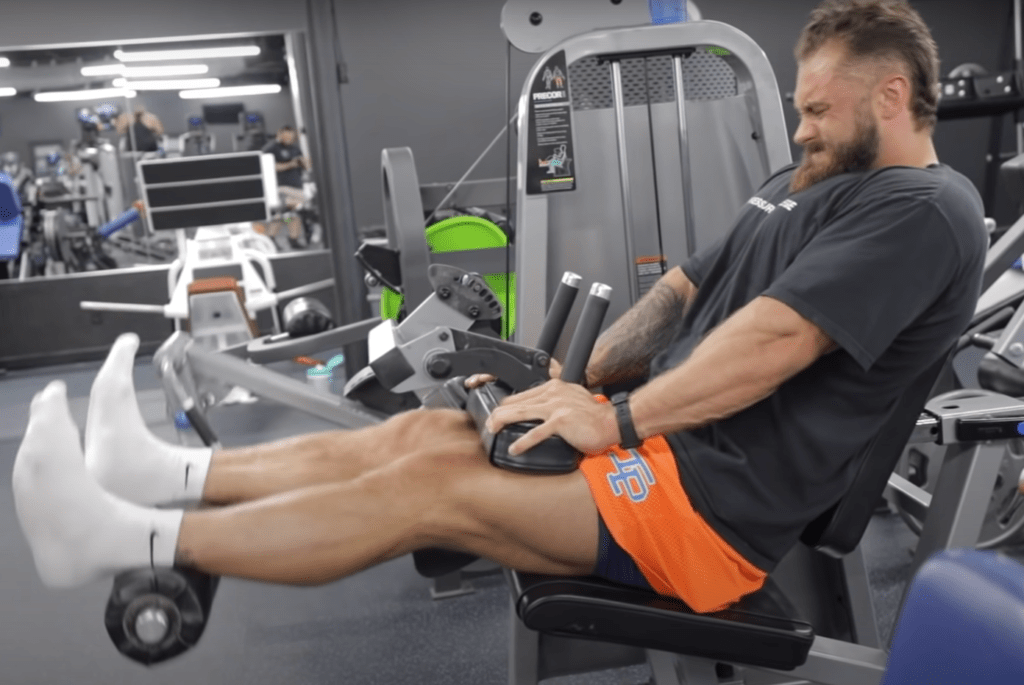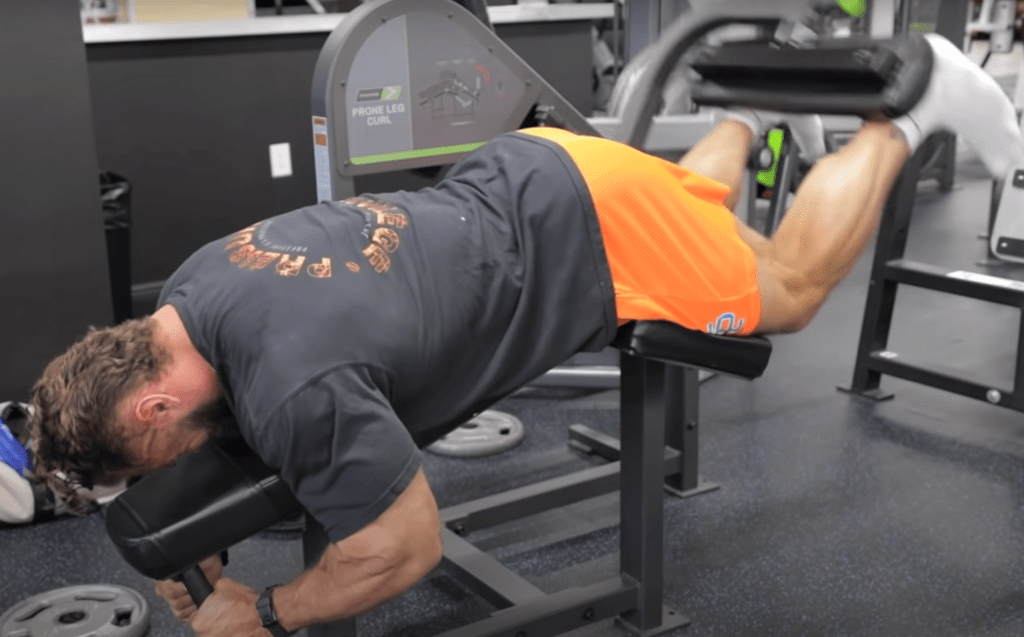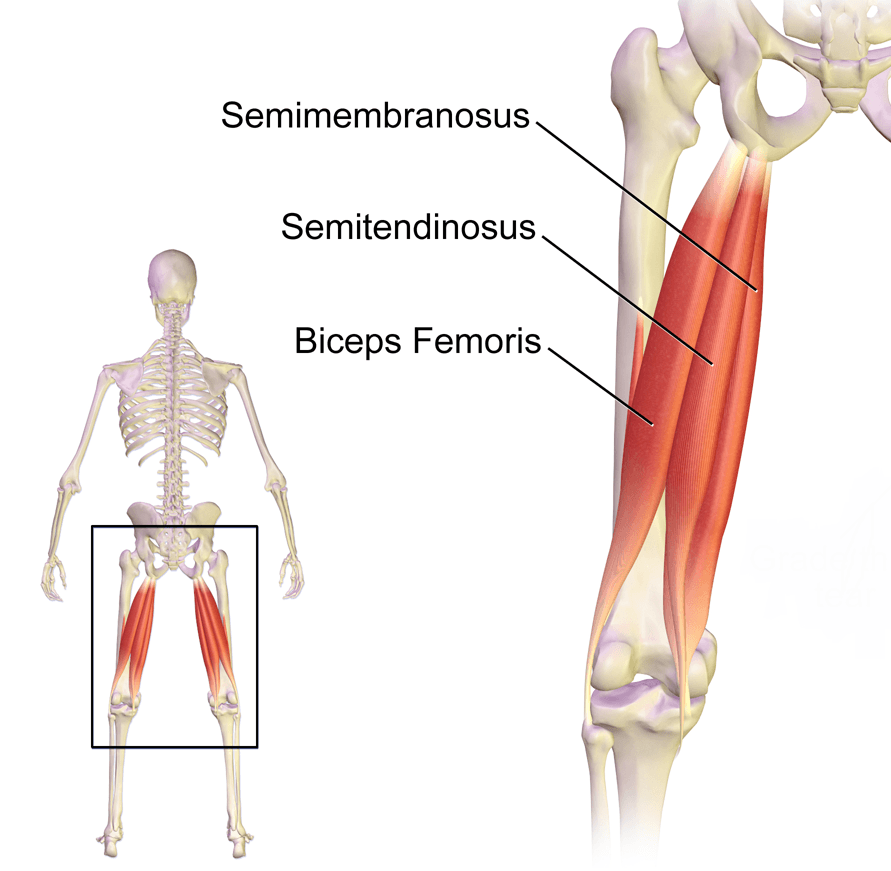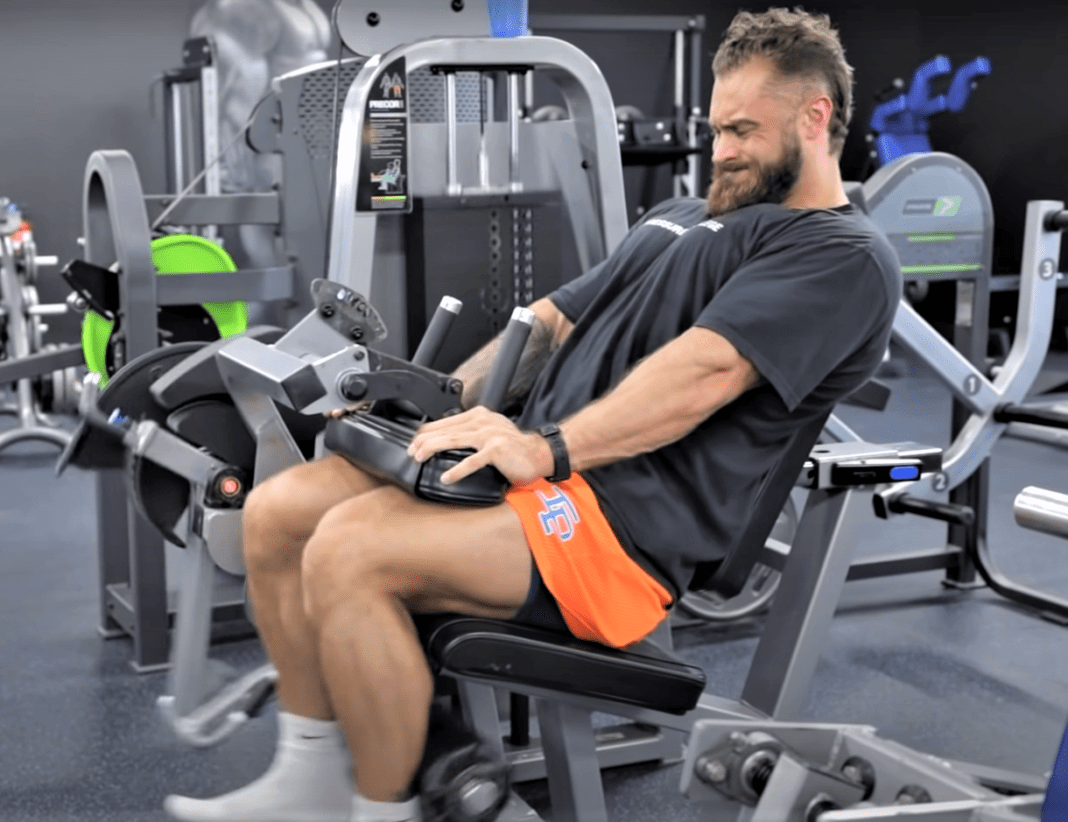Seated leg curl contraction. / YouTube
Seated leg curls are better than lying leg curls at building hamstring muscle. This may be surprising. After all, the lying leg curl is the old standard. Every gym has a prone leg curl machine. But the seated version? Maybe; maybe not. The seated leg curl might seem like a shorter, easier movement, as too many bro science “experts” preach. And it might just feel more hardcore to lie face-down and crank out leg curls than to sit and do them. Forget all that. What does the non-bro, real science say? If you had to choose between the two (and hopefully you don’t) taking a seat is the superior way to train hams. Let’s explore why.
LEG CURL MECHANICS
With both the seated leg curl and lying leg curl, your legs at the knee joints contract the same amount, from straight to bent at more than 90 degrees.
HAMSTRINGS TRAINING TIP: Any leg curl contraction depends somewhat on the size of the ankle pad, so, if you have a choice, a machine with a thinner pad can provide a slightly greater range of motion.
Because of this same straight to bent movement, you might think the two exercises are interchangeable.

Wrong. They’re actually very different exercises. To visualize how different, picture doing a seated leg curl movement while lying face down. Unlike a lying leg curl on a flat machine, your thighs would not be aligned with your upper body and horizontal to the the floor. Instead, they’d be bent 90 degrees at your hips and vertical to the floor.
The greater hip flexion of the seated leg curl places the three hamstring muscles in a more lengthened position. Conversely, the lying leg curl begins with more hip extension, placing the hamstrings in a more shortened position. Evidence shows, as renowned exercise scientist Brad Schoenfeld, PhD writes: “[There are] greater gains in distal muscle hypertrophy when training at long vs. short muscle lengths for the limb muscles.” Put simply, longer length equals greater gains.
HAMSTRINGS TRAINING TIP: Most modern leg curl machines are angled downward at the front (upper body) and/or the back (thighs). These machines provide greater hip flexion than the old-school, flat, leg curl machines and therefore are superior, but they still won’t provide as much hip flexion as a seated leg curl machine.

SEATED LEG CURL VS. LYING LEG CURL: THE STUDY
A recent study pitted the seated leg curl versus the lying leg curl. For 12 weeks, 20 subjects did seated leg curls with one leg and lying leg curls with the other: five sets of 10 reps twice weekly. Leg dominance was factored into the design, with half doing seated with their stronger leg and the other half doing lying with their stronger leg. Afterwards, the subjects tested strength, hypertrophy, and three-day muscle damage.
Muscle damage was similar for seated vs. lying. Strength gains were slightly greater for the seated leg curl: 31.1% versus 26.6% for lying. When it came to hamstring hypertrophy, both exercises caused similar growth of the biceps femoris short head. However, the seated leg curl caused significantly more growth in the biceps femoris long head, semitendinosus, and semimembranosus (all three hamstring muscles). The lying leg curl provided more growth of the sartorius at the front of the thigh.

The study’s authors concluded: “In summary, we demonstrated that hamstring muscle hypertrophy was greater after seated than prone leg curl training, exclusively for the biarticular hamstrings that were in more lengthened positions during the seated leg curl….the seated rather than prone leg curl is recommended if training aims include increasing/maintaining muscle size of the hamstrings.”
OTHER HAMSTRING EXERCISES
As for other hamstring exercises, they too seem to follow the longer length equals greater gains formula. Anytime you bend at the hip joint, such as when seated or bending towards the floor, the hamstring is going to be at a greater length. An EMG study of four hamstring exercises (lying leg curl, good morning, glute-ham raise, Romanian deadlift) concluded that the latter two created the most hamstring muscle activation. Yep, bent at the hip joint, again. That’s true of good mornings, too, though the glute-ham raise (with the upper body down in the stretch position) and Romanian deadlift ranked highest. Because the stress is different than a leg curl, we advise pairing either the glute-ham raise or stiff-leg/Romanian deadlift with a leg curl exercise.
As for standing leg curls, mechanically, these are the same as a seated or lying leg curl but performed with one leg at a time. If you lean forward, it approximates a seated leg curl (more hip flexion). If you stay vertical, it approximates a lying leg curl (more hip extension).
HAMSTRINGS TRAINING TIP: Whatever hamstring exercise you do, make sure to get a full stretch on every rep. Full extension is the most important part of the lift for maximizing growth.
SEATED LEG CURL VS. LYING LEG CURL: CONCLUSION
The lying leg curl has taken a beating in this article. Let’s give it some love. It’s a perfectly good exercise. Because the hip joints are straight or straighter, it works the hamstrings differently than a fully-bent-hip exercise, so it makes a good pairing with the seated leg curl or stiff-leg deadlift. Do lying leg curls.
However, if you do only one leg curl exercise, and the choice is between lying or seated, take a seat.
Related: The Best Hamstring Workouts
















































